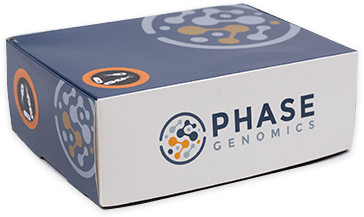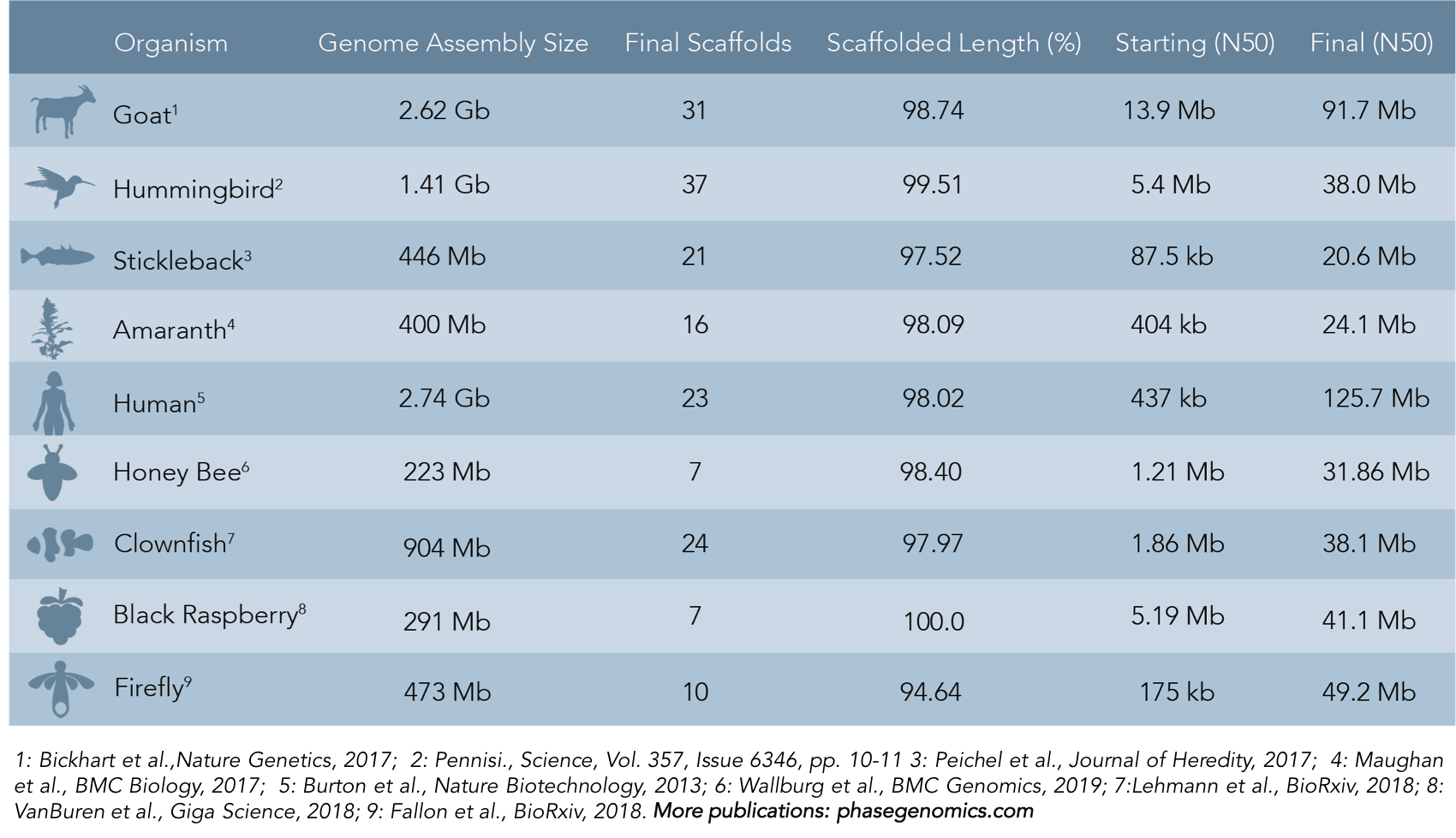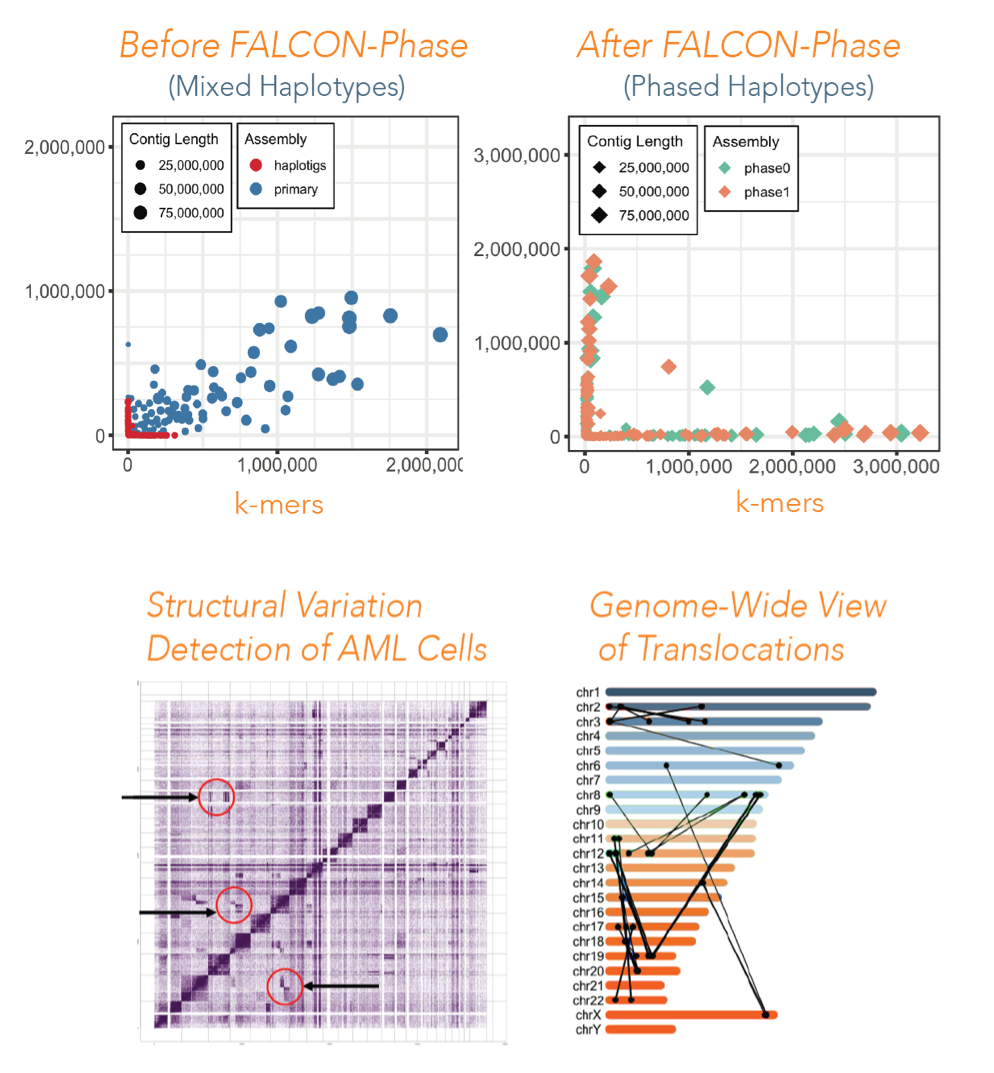Proximo kits & services
Generating the Blueprints:
Proximo™ Genome Scaffolding Platform
Convert Contigs to Chromosomes
The Proximo Genome Scaffolding Platform employs cost-effective proximity ligation data generated using in vivo Hi-C to orient and order contigs into chromosome-scale scaffolds and generate reference-quality genome assemblies for virtually any organism. Go beyond the sequence to phase haplotypes and detect structural variation; and help deliver on the promise of genomics across a wide range of many applications in agriculture and medicine.

Proximity ligation technology is used to trap short-, long-, and ultra-long-range intracellular DNA contacts (black arcs). Chimeric junctions originating from the same cell are recovered, converted into an Illumina® sequencing library, and subjected to paired-end sequencing. The signal increases as the genomic distance between any two loci across the genome decreases. The Proximo Platform extrapolates this information to scaffold and phase genome assemblies.
Download to learn more

Features and Benefits
- Scaffold chromosome-scale genomes
- Generate high-quality, long-range sequencing data
- No high-molecular-weight DNA extraction required
- Short-read compatible; yields libraries for Illumina® sequencing
- User-friendly, 2-pack Proximo Hi-C Kits with Proximo Genome Scaffolding Analysis service
Proximo Workflow
Our Proximo Platform provides a sample-to-analysis solution that starts with a tissue sample, and ends with analyzed data. The entire process (depicted below) is typically completed in a month.

Proximo workflow, from sample to analysis.
The proximity ligation library prep constitutes a specialized part of the workflow. Our Proximo Hi-C Library Prep Kits provide a streamlined protocol that does not require the extraction of high-molecular weight (HMW) DNA. Five different kits, optimized for different sample types (human, animal, plant, fungi and microbes) ensure robust results across all organisms. The 8-step library prep workflow can be completed in 2 working days, and requires only 3 hours of hands-on time. The protocol contains several convenient, safe stopping points.

Proximo Hi-C library prep workflow.
If a draft assembly is not yet available for your sample, we can help facilitate traditional sequencing projects prior to Hi-C scaffolding. Contact us for recommendations or to discuss a service project if you do not have prior experience with whole-genome sequencing and assembly.
Sequencing may be performed on any Illumina® sequencer. The Proximo Kit yields a dual-indexed proximity ligation library, for which ~50 to 100 million paired-end reads are required.
Proximo Kits may be purchased as bundles, which include the Proximo Genome Scaffolding analysis service. Additional computational services are also available.
Contact us for a consultation on data analysis or interpretation, or if you are interested in additional analysis services.
Download the Proximo Library Prep Protocol for your kit/sample type
Key Applications
Click here for more Proximo Applications in Plant & Animal Genomics and Human Genomics & Epigenomics

Assemble high-quality reference genomes
Transform your draft assemblies into high-quality genomes. Proximo, the most published Hi-C scaffolding method, dependably yields high-quality, end-to-end chromosome scaffolds for diverse species, from diverse sample types. Hi-C data and Proximo may also be integrated with other computational approaches (e.g. FALCON-Phase), to enable the production of “gold” and “platinum” eukaryotic genomes
See a complete list of eukaryotes for which reference genomes have been generated or improved with the Proximo Platform.

Phase haplotypes and detect structural variants
Hi-C captures both short-range and long-range genomic contiguity. The Hi-C signal increases as the genomic distance between any two loci across the genome decreases. FALCON-Phase uses this information to phase genomes. Proximo SV detects complex rearrangements, including balanced translocations, chromothripsis, and copy number changes across the entire genome. Collect SNV, CNV, SV, and phase data from a single library prep.
Proximo captures the complexities of the genome and structural aberrations in cancer by generating phased, end-to-end chromosome scaffolds.
Support & Resources
Proximo and related computational analysis tools
Read more
Frequently Asked Questions
Watch to learn more
